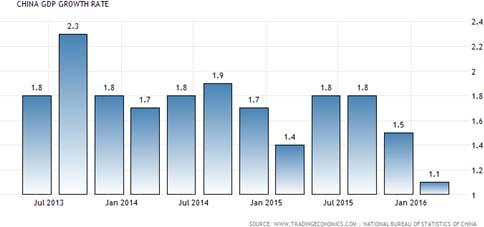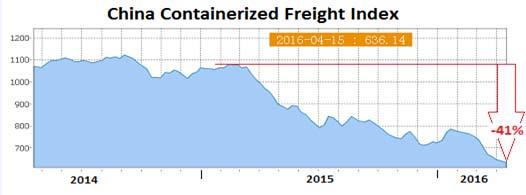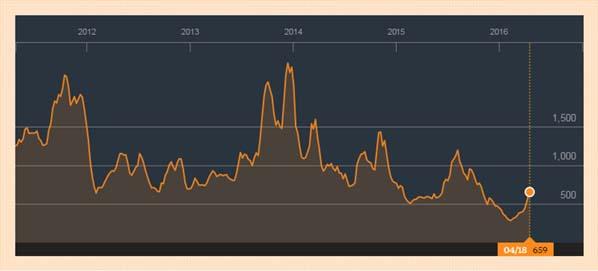Considering all that has occurred in global markets over the past week you would be forgiven for having missed an important figure from China’s recent GDP results. Suspiciously, China’s Bureau of National Statistics, who is responsible for compiling the official GDP figures, seemingly delayed the release of the Q1 data, despite the headline annual result becoming public on Friday. Therefore, being the suspicious contrarian that I am, the result deserved a significant review.
Despite the subterfuge over their release, the seasonally adjusted quarterly results contained some concerning numbers. It would appear that growth has largely moderated within the PRC throughout the first quarter, coming in at just 1.1%, the slowest GDP number since late 2010. In fact, on an annualised basis, that result does little to warm the hearts of the bulls as it implies GDP growth of just 6.3% which is a significant distance from the “official” figure.
However, there are plenty of reasons to even doubt the veracity of that figure given the level of manipulation that commonly occurs within Chinese GDP reporting. Some of the best gauges of industrial and manufacturing activity that we have are all at dire levels. In particular, Chinese containerised sea freight has completely collapsed to levels not seen since the height of the global contraction. Given the importance that manufacturing and exports pose to the Chinese economic future it is concerning indeed to see such a strongly bearish trend within those indicators.
The Shanghai Containerized Freight Index (SCFI) largely tracks spot rates within the shipping market for containers departing the Chinese export hub. A quick look at the graph shows a definite trend predicated to the downside, with the index down over 58% since February last year. This result seems to tally, both with the collapse in the Baltic Dry Index, and the excess capacity evident within the shipping industry as a whole. Rates for shipping are dropping relatively steadily and coupled with the BDI result imply that there has been a significant collapse in the amount of container shipping being demanded out of China.
Subsequently, it is really no surprise that the Chinese GDP figures are pointing to diminished demand within the first quarter of 2016. In fact, this economic slowdown is largely in line with the ongoing turmoil within domestic debt markets as corporate bond yields spike and uncertainty abounds. In addition, given the constant downward revisions of global growth from the IMF, it should come as no surprise that the Asian powerhouse has not escaped a slowdown.
Baltic Dry Index (Source: Bloomberg)
However, the question remains as to the extent of a domestic slowdown in China given the unreliability of much of the reported data. To answer that question, one needs only to look at the country’s GDP diversity with secondary industry representing nearly 44% of GDP receipts. Subsequently, despite the pivot towards the service sector, manufacturing and industry still represent a statistically significant component of GDP growth.
It therefore makes little sense that such a sharp contraction within an industry sector that contributes nearly 44% of all GDP would have little impact upon the “official” figures. I firmly believe that the collapse in containerised cargo, sharp contraction in the Baltic Dry Index, and the fall in electricity consumption are all endemic of a country that is facing some sharp economic challenges in the months ahead. Ultimately, China should come clean now on the extent of the domestic slowdown lest a collapse in the corporate debt markets become the first show across the bow which could lead to a global recession in 2016.
Risk Warning: Any form of trading or investment carries a high level of risk to your capital and you should only trade with money you can afford to lose. The information and strategies contained herein may not be suitable for all investors, so please ensure that you fully understand the risks involved and you are advised to seek independent advice from a registered financial advisor. The advice on this website is general in nature and does not take into account your objectives, financial situation or needs. You should consider whether the advice is suitable for you and your personal circumstances. The information in this article is not intended for residents of New Zealand and use by any person in any country or jurisdiction where such distribution or use would be contrary to local law or regulation. Knight Review is not a registered financial advisor and in no way intends to provide specific advice to you in any form whatsoever and provide no financial products or services for sale. As always, please take the time to consult with a registered financial advisor in your jurisdiction for a consideration of your specific circumstances.
Recommended Content
Editors’ Picks
EUR/USD stays below 1.0700 after US data

EUR/USD stays in a consolidation phase below 1.0700 in the early American session on Wednesday. The data from the US showed a strong increase in Durable Goods Orders, supporting the USD and making it difficult for the pair to gain traction.
USD/JPY refreshes 34-year high, attacks 155.00 as intervention risks loom

USD/JPY is renewing a multi-decade high, closing in on 155.00. Traders turn cautious on heightened risks of Japan's FX intervention. Broad US Dollar rebound aids the upside in the major. US Durable Goods data are next on tap.
Gold trades on the back foot, manages to hold above $2,300

Gold struggles to stage a rebound midweek following Monday's sharp decline but manages to hold above $2,300. The benchmark 10-year US Treasury bond yield stays in the green above 4.6% after US data, not allowing the pair to reverse its direction.
Worldcoin looks set for comeback despite Nvidia’s 22% crash Premium

Worldcoin price is in a better position than last week's and shows signs of a potential comeback. This development occurs amid the sharp decline in the valuation of the popular GPU manufacturer Nvidia.
Three fundamentals for the week: US GDP, BoJ and the Fed's favorite inflation gauge stand out Premium

While it is hard to predict when geopolitical news erupts, the level of tension is lower – allowing for key data to have its say. This week's US figures are set to shape the Federal Reserve's decision next week – and the Bank of Japan may struggle to halt the Yen's deterioration.


